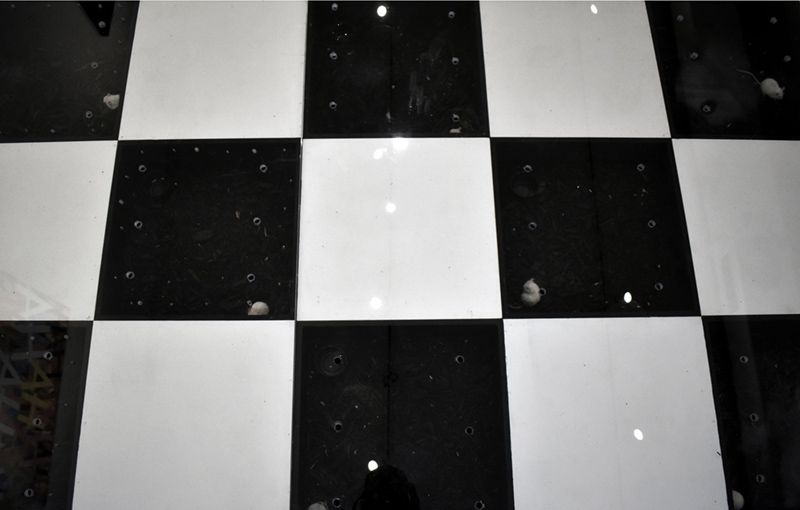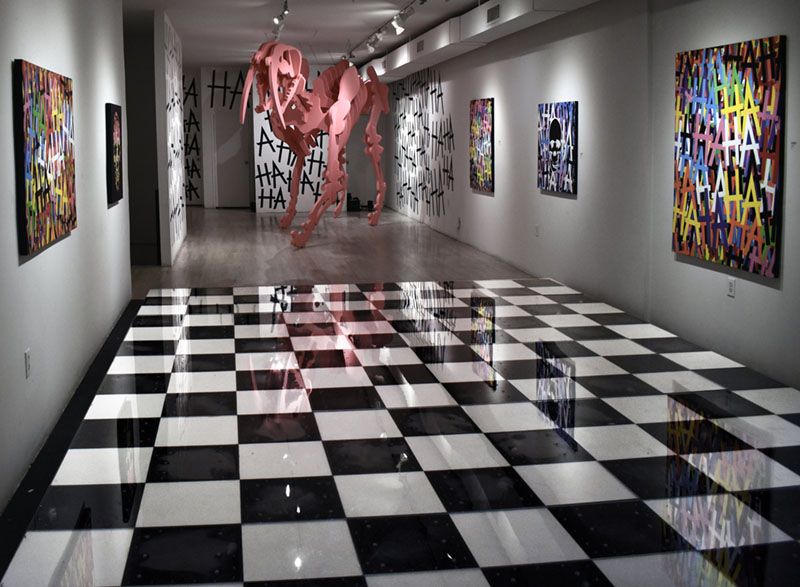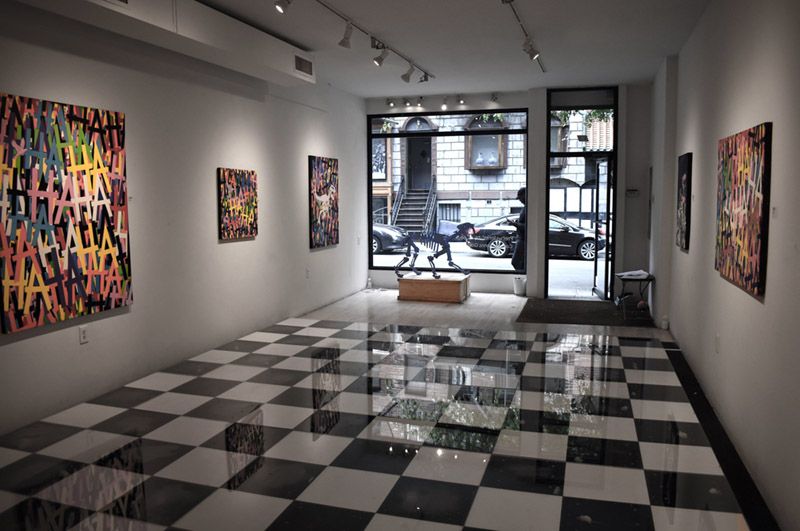Last Chance to Catch NYC's Holiday Notalgia Train
We met the voices of the NYC subway on our nostalgia ride this weekend!


Living in New York City comes with the territory of encountering certain kinds of pests: cockroaches, rats, mice, and an untold amount of other scary (yet seemingly unidentifiable) creatures. But while we usually scream and run away from them, artist Joseph Grazi’s exhibition, Prehysteria, raises the question: why are we afraid of certain kind of pests?
His solo, month-long exhibition introduces 12 new works of art — most notably, a 240-square-foot checkerboard floor with 140 sixteen-by-sixteen-inch squares, called “The Social Network.” But here’s the kicker: contained underneath the jet-black checkerboard tiles are “solitary modular habitats,” fitted with food, water and organic black hamster substrate. There’s enough in each compartment to sustain a single white mouse for a total of 70 live mice in the exhibit.
The critter-filled floor is one of the centerpieces of Prehysteria — a portmanteau of “prehistoric” and “hysteria” — which references how humans have an inherited cognitive disposition to ward off prehistoric threats; it’s a condition that still persists to this day, even in the modern context of the city.
The exhibition specifically focuses on the themes of control and chaos, allowing visitors to come face to face with their primordial fears in a controlled and aesthetic environment. After all, Prehysteria not only questions why we’re afraid of pests, but also our relationship to them: why do we perpetuate the construct of “pests?,” and what happens when we exert control — in this case, manmade control — over this fear?

Image courtesy Joseph Grazi
The Social Network gives viewers an opportunity to get an intimate look at what is regarded as one of New York City’s most infamous and prevalent pests — a four-legger apparently evolving to digest pizza. Although tiny in size, mice still illicit fear in even the most seasoned New Yorkers.
“The piece is designed to literally elevate humans above the ‘lesser species’ and to illustrate the unchallenged dominance we exert over mice,” the press release for Prehysteria explains. “To walk on the piece may initially elicit fear and disgust in many (even while the viewer knows that the mice can’t make physical contact with them)—though its precise and clearly manmade aesthetic will soon establish a controlled, safe space for the viewer to confront and perhaps reconcile his or her fear.”
With his exhibition, Grazi also examines the arbitrary animal hierarchy that exists in Western Culture (particularly in New York City): “When a person sees a mouse in their apartment, trauma-by-broom might be that poor mouse’s fate,” he states. “But elevate the intruder to a small puppy, and they’d probably want to pet it rather than kill it—and the idea of harming one can actually land you in legal trouble or jail, let alone social obliteration. But why? Mice and rats are extremely intelligent with innate self-sufficiency and social instinct, but they are considered pests to be inconsequentially dealt with.”

Image courtesy Joseph Grazi
To that end, another focus piece of the exhibit is the 10-foot-tall sculpture of a saber tooth tiger skeleton, whose imposing size is made less threatening by its light pink color paint job and the fact that it’s made to look like a children’s 3D wood puzzle. The scale is purposeful: it’s meant to represent the irrationality of fearing a species that humans evolutionarily outlasted.

Image courtesy Joseph Grazi
Prehysteria also features several pattern-oriented paintings, including a background motif comprised of manically written “HAs” — reflecting the humors of evolution — and iconographic dinosaurs mockingly commenting on how the “great phylum could not keep up with time.”
It’s all on view until November 20, 2017 at Castle Fitzjohns Gallery at 98 Orchard Street.
Next, check out 14 Art Installations and Exhibits in NYC Not to Miss in November and the Bundle of Shimmering Tubes Now on View in the Flatiron District.
Subscribe to our newsletter